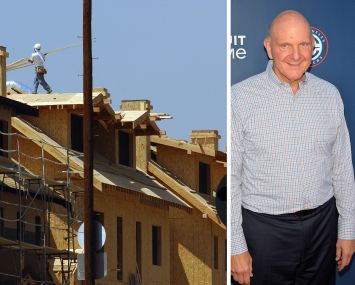 Once upon a time, a knot of cast-iron buildings buzzed and whirred along the western edge of Brooklyn, cranking out boxes and Brillo pads, until one day a man named David Walentas turned them into condos.
Once upon a time, a knot of cast-iron buildings buzzed and whirred along the western edge of Brooklyn, cranking out boxes and Brillo pads, until one day a man named David Walentas turned them into condos.
As ruler of the village, which years earlier had been christened Dumbo, Mr. Walentas surrounded himself with trusted confidantes, and in due time his advisers absorbed his aesthetic values, acting as arbiters of taste for the flourishing Kings County kingdom.
Thirty years later, with buildings in Dumbo now commanding upward of $24 per square foot, the task of curating the well-manicured waterfront neighborhood has fallen to Caroline Pardo, director of commercial leasing for Two Trees, Mr. Walentas’ management company. Unlike many of her counterparts across the city, Ms. Pardo’s position relies as much on her refined taste as it does on her ability to sign tenants—or, nearly as often, turn them away.
“For the retail at least, we’re very exclusive and very picky with the type of people we bring into our spaces because from the very beginning David had this vision of building a community,” said Ms. Pardo, 30, who joined Two Trees in 2003. “He knew that in order for people to be happy and create this neighborhood, it depended on the type of retailers that he brought to the neighborhood.”
To be sure, the Brooklyn resident has had a say in turning away restaurants, diners and delis that threatened to derail ancient ventilation systems inside the historic buildings and, in one case, a trophy retailer, which she and Mr. Walentas simply deemed, well, irrelevant.
More surprising, however, are the chain pharmacies like Duane Reade and the bank branches that Two Trees has turned down, often at the cost of well-above-market-rate rent.
In lieu of those chains, Ms. Pardo said she was in search of a sporting goods retailer to occupy space in the neighborhood in anticipation of the long-awaited Brooklyn Bridge Park, a sweeping 85-acre public recreational area slated for completion by 2012.
“We want to maintain the character of the neighborhood by having mom-and-pop stores … as opposed to having a bank on every other corner or having too many national chains in the neighborhood,” said Ms. Pardo, who noted that the few chains currently leasing with Two Trees include the country’s first West Elm furniture store and a BoConcept branch owned by a husband and wife. A Starbucks in Dumbo is housed in one of the few buildings not owned by Two Trees, Ms. Pardo added, a point Mr. Walentas has also made in previous interviews.
Ms. Pardo’s high standard has paid off, with tenants from the creative and technology sectors rushing to embrace Dumbo’s 11201 ZIP code. This year alone, Guerin Glass Architects and clothing designers Scott Langston and Morgan Carper, among others, have added a chic sheen to the former home of the world’s first tin can manufacturer.
ACCOMODATING THE CITY’S WAVE of artists, including galleries, venues and studios, has been at the center of Mr. Walentas’ philosophy since he began buying buildings in Dumbo, and it’s an ideal that Ms. Pardo has continued to shepherd by offering incentives and rent reductions to the typically empty-pocketed virtuosos. The beloved St. Ann’s Warehouse pays nothing for its space inside a former spice-milling factory; and Galapagos, a venue formerly operating in Williamsburg, pays just $6.82 a square foot for its 10,000-square-foot Main Street space.


